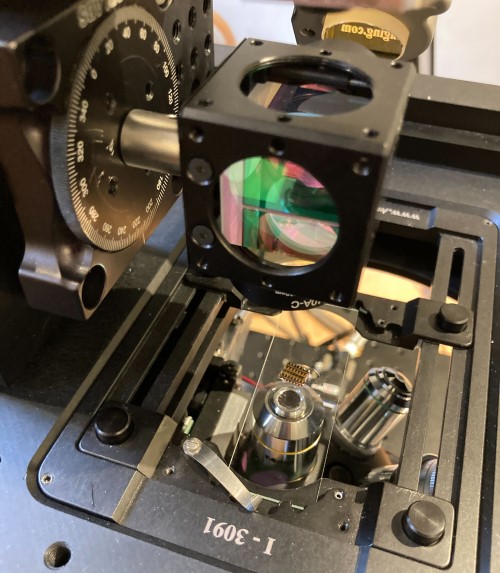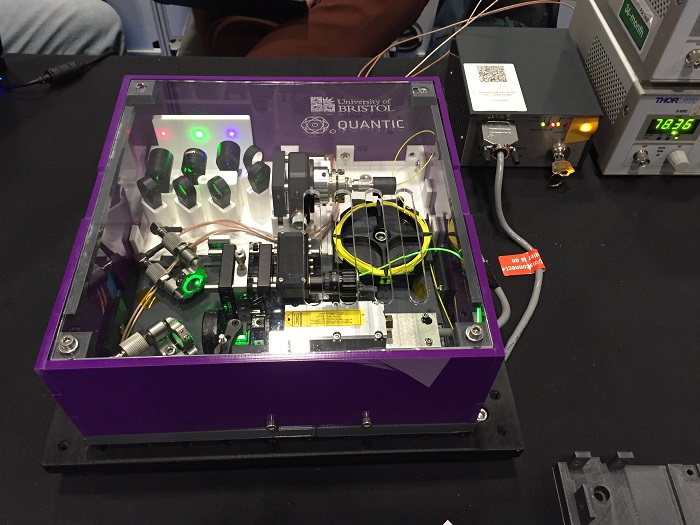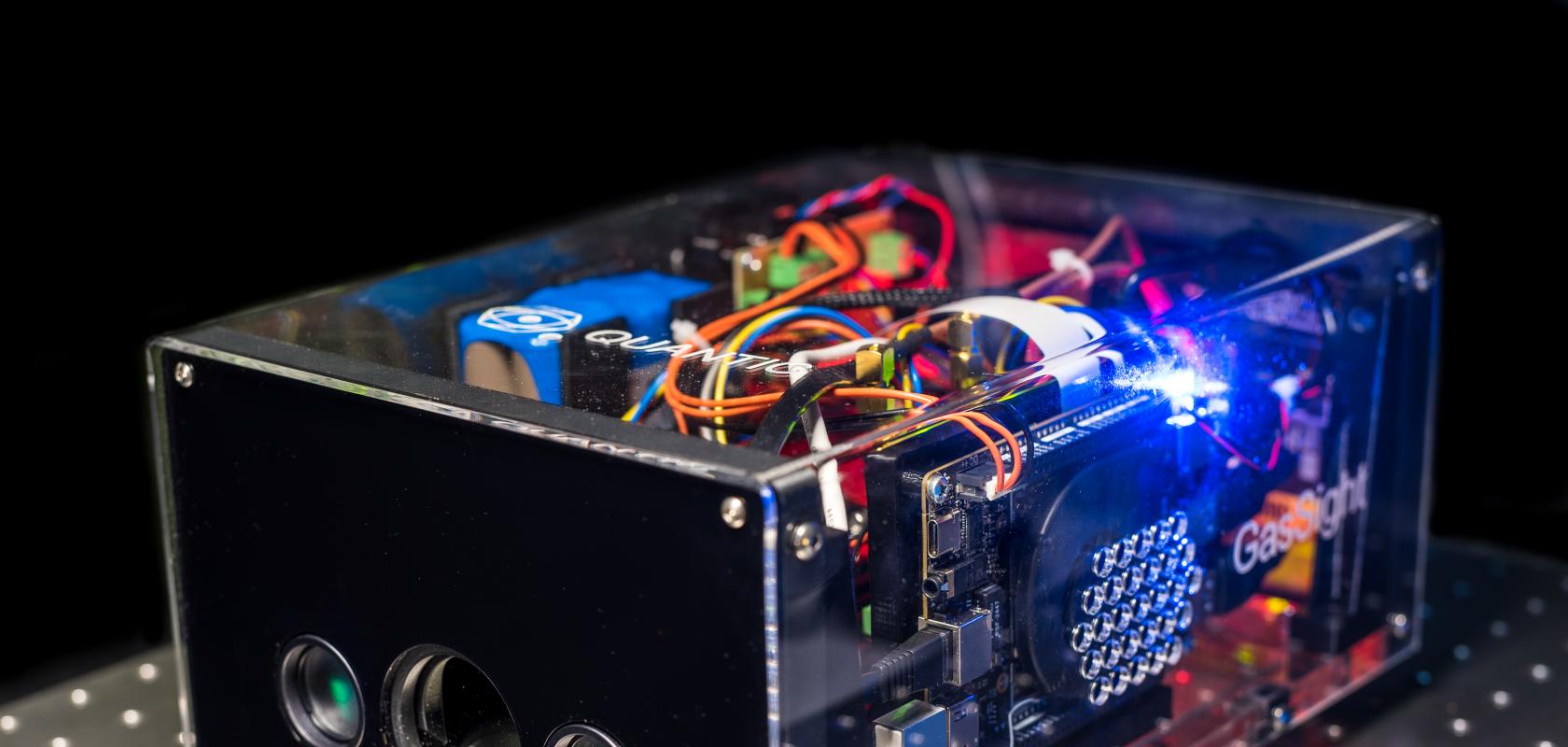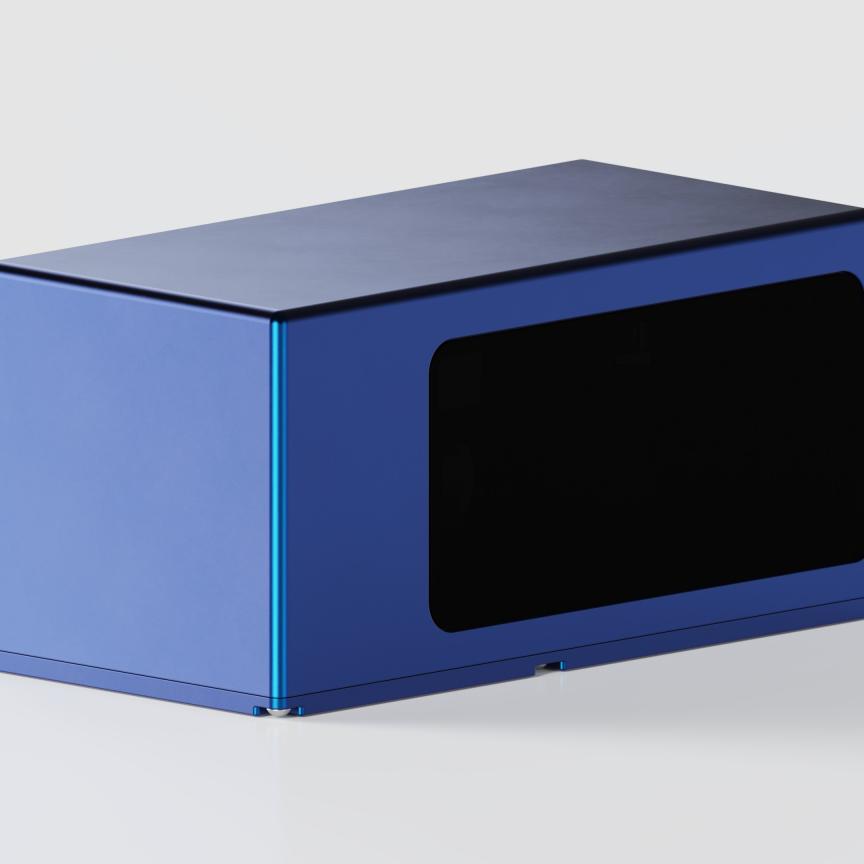Matthew Dale asks whether quantum technologies are ready to be seen on the global stage at one of the world’s largest photonics exhibitions
This year sees the debut of the World of Quantum hall at the Laser World of Photonics, where quantum technology and its applications in areas including computing, cryptography, sensing, imaging, communications, and medicine will be explored.
Messe München describe quantum technologies as being on ‘the verge of breaking out of their ivory tower of existence and entering the general marketplace’, and that the new hall will provide a platform to continue the ongoing close dialogue between industry and academia. Attendees can expect the latest findings of universities, research associations and quantum clusters to be presented alongside the photonics components and systems that help deliver quantum technologies.
In advance of the conference, Electro Optics approached Professor Miles Padgett, principal investigator at the UK quantum hub for imaging ‘QuantIC’ – one of the exhibitors in the newly established hall – to learn if now is indeed the right time for quantum to be given its own place among the other exhibition sectors.
Emerging from the lab
Padgett began by noting that despite the debut of the new hall this year, Laser World of Photonics has in fact played host to quantum technologies for a number of years already, which is why this will be the third time QuantIC has exhibited – along with numerous other quantum entities that have also previously been at the show.
‘Now, in terms of creating even more of a quantum focus with the establishment of the new exhibition hall, I would say this is in part a result of Germany wanting to further encourage the collaboration of its quantum research with industry,’ he said, ‘and that's what Messe München is looking to drive through this year’s show. This will be very beneficial for the country as the volume of activity Germany has in high-tech photonics is huge, and so there are some fantastic opportunities there.’
He elaborated that this reflects a global trend currently underway – that governments worldwide are now looking to reap the benefits of their years of investment in quantum research.
‘From a UK perspective, it was back in 2014 that the Government decided the time had come to translate its world-leading science in quantum technologies into commercial, economic and societal benefits,’ said Padgett. ‘Consequently, it made investments amounting to around £300 million intoquantum technologies, establishing four quantum hubs in the process. This investment has since increased to around £1 billion.’

This ultra sensitive infrared microscope is an example of a quantum product that could have numerous applications in both material instrumentation and life sciences.
At the same time companies such as Germany, France, America, Australia and China have also been strongly funding quantum research, with investments totalling around £30 billion worldwide, according to Padgett. ‘And so this has very much become a global activity,’ he remarked.
Back in 2014 however, the hype surrounding quantum was certainly not at the level it is today.
‘Back then industry most likely regarded “quantum” as being something to do with cats in boxes, and lots of incredible-sounding ideas and concepts,’ said Padgett. ‘It was unclear to them how that would translate into commercial benefits. So I think what's happened over the last eight years or so is that companies have really started to see how quantum can improve existing technologies such as microscopes, telescopes, communications and computers, while at the same time opening up completely new opportunities.’
This change in perspective is the result of quantum gradually moving from the lab to actual, usable technologies that can be wielded by industry today. ‘It’s not just research anymore,’ Padgett remarked. ‘There are now real examples of products you can buy based on quantum technologies. For example, the CMOS Single Photon Avalanche Diode (SPAD) arrays developed by Robert Henderson at the University of Edinburgh, working with STMicroelectronics, have since led to a new type of camera.’
Rather than every pixel recording the intensity of light, as is done by a normal camera, these new SPAD cameras record the time at which the first photon arrives, which can be used, for example, to monitor the timescale of the fluorescence of a biological cell. Glasgow-based Horiba has since developed a new product based on this type of camera, which performs fluorescence lifetime imaging.
‘So that's just one example of something that's come all the way from a research lab into an actual product,’ said Padgett. ‘Clearly not all of the research has done that, but much of it is on that journey. And that's just from our hub; the other three UK hubs, based in Birmingham, Oxford and York, all have similar examples. It is these types of products – the culmination of years of research – that attendees can expect to see at the new exhibition hall in Munich this year.’
Exhibiting on the global stage
We asked Padgett what QuantIC looks to achieve from exhibiting in Munich: whether it’s just to showcase the new technologies emerging from the lab, or whether it’s also to encourage further partnerships with industry/academia, or perhaps attract fellow exhibitors with photonic components that could help QuantIC develop its own technologies further.
‘So really it’s all of the above,’ he said. ‘For us there's two main events in our annual calendar: Laser World of Photonics and SPIE Photonics West. Both are examples of joint industrial/academic conferences, where in addition to the industrial exhibition there's also a world-class academic conference as well. And while there’s nothing unusual with academic quantum researchers attending these meetings, what is unusual is them having a presence on the industrial exhibition floor, and that really shows the transition of these technologies from an academic paper, to a technology demonstrator, to new, exhibitable products.’
Padgett remarked that the objectives he and his colleagues have had in going to industrial conferences have shifted over time as their research has materialised into such products.
‘We’d previously go in with a list of technologies that we’re looking for and walk the halls to see what was available, and while we're still doing that to an extent, now we’re mostly in PR mode,’ he said. ‘We want to show the world that these technologies are now real, so real, in fact, that we’re prepared to put them in a case and ship them across the world to exhibit them!’
At its booth in Munich, QuantIC will be showing its GasSight system (top image), a low-cost imager developed in collaboration with M-Squared Lasers that can produce real time video of methane gas. The system has applications in sectors such as oil and gas, building and construction, food processing, inspection of industrial plant and water treatment. It aims to fill a gap in the market for a low-cost, small-sized, low-power and highly portable remote gas detection system.
GasSight uses a telecoms laser diode to illuminate a scene at 1.65μm, exactly the wavelength corresponding to the absorption of methane gas. This image of the methane cloud is overlaid upon a high resolution RGB image of the overall scene, giving a composite full colour image where the methane appears as a red cloud.
‘The prototype camera has already demonstrated pure methane detection in a laboratory setting,’ remarked Padgett. ‘Our challenge for the next stage will be to increase the sensitivity of the system so that its operational range can be increased to 3m or more. We will also explore the possibility of extending it to be able to detect other gases.’
Also on display at QuantIC’s booth will be an ultra-low noise imaging system developed with the University of Bristol. This twin-beam light source harnesses nonlinear photon interactions in specially designed optical fibre to generate bright, visible-wavelength red and blue beams that are correlated in intensity and spectrum. This approach can suppress optical intensity noise below the classical shot-noise limit in order to reach the ultimate level of precision allowed by quantum mechanics, therefore enabling ultra-precise measurements at optical powers that compete with the performance of laser sensors.

QuantIC's ultralow noise imaging system is designed to be both simple to use and highly stable, and differs significantly from existing commercial quantum light sources in both operating wavelengths and light intensity.
‘Our twin-beam light source takes advantage of the inherent correlations present in nonlinear optical processes to deliver intensity-noise-supressed measurements at high optical powers,’ said Padgett. ‘Novel light sources of this kind will be essential quantum photonic components in a range of future applications including enhanced biomedical imaging and precision sensing of light-sensitive samples.’
And of course, one further goal that Padgett and his colleagues have when attending these events is to have valuable, in-person conversations. 'We have £65 million worth of ongoing collaborative projects at QuantIC, how do you think those came about? We spoke to people at conferences. And that's not to say that all conversations start this way, but some do, and many of ongoing conversations will continue at these events. There really is no equal when it comes to conducting a multi-way conversation than over a drink at a conference. Sure, Zoom has made things easier, but if you’re launching a project with, for example, a major multinational, a component manufacturer, an SME and two academic groups, that can prove to be quite challenging to coordinate over a video call. However, as everyone will be heading to Munich, it’s both easy and convenient to arrange and conduct multi-way discussions there.’
Still on the lookout for new technologies
Despite QuantIC’s years of research now having materialised into physical products, Padgett and his colleagues still keep an eye out at exhibitions for new photonics technologies that could further benefit their work.
‘The detection of single photons is central to many, many quantum systems and applications, and in the visible region of the spectrum, remarkable technologies now exist for this,’ Padgett said. ‘Take Hamamatsu’s Orca-Quest camera for example, which we were lucky enough to be one of the first one’s to trial outside of Japan; every single pixel can count the number of photons, it's incredible!
‘But it only works in the visible, whereas many applications out there rely on the infrared, for example telecommunications, lidar and imaging systems. However, the kinds of single photon counting systems that exist for the visible region do not currently exist for the infrared. And so lots of activity can now be seen worldwide in extending the wavelength range at which you can do clever things with photons, such as counting and timing them using a camera rather than a single detector. At the University of Glasgow for example, we've got lots of work taking place on germanium on silicon, which involves taking the silicon technology and extending the wavelength range into the shortwave infrared, to enable benefits such as being able to look through smoke, fog, the body, etc. So we’re always on the lookout for new single-photon detection technologies and the components that enable this, for example filters that cater to the unique requirements of the quantum world.’


